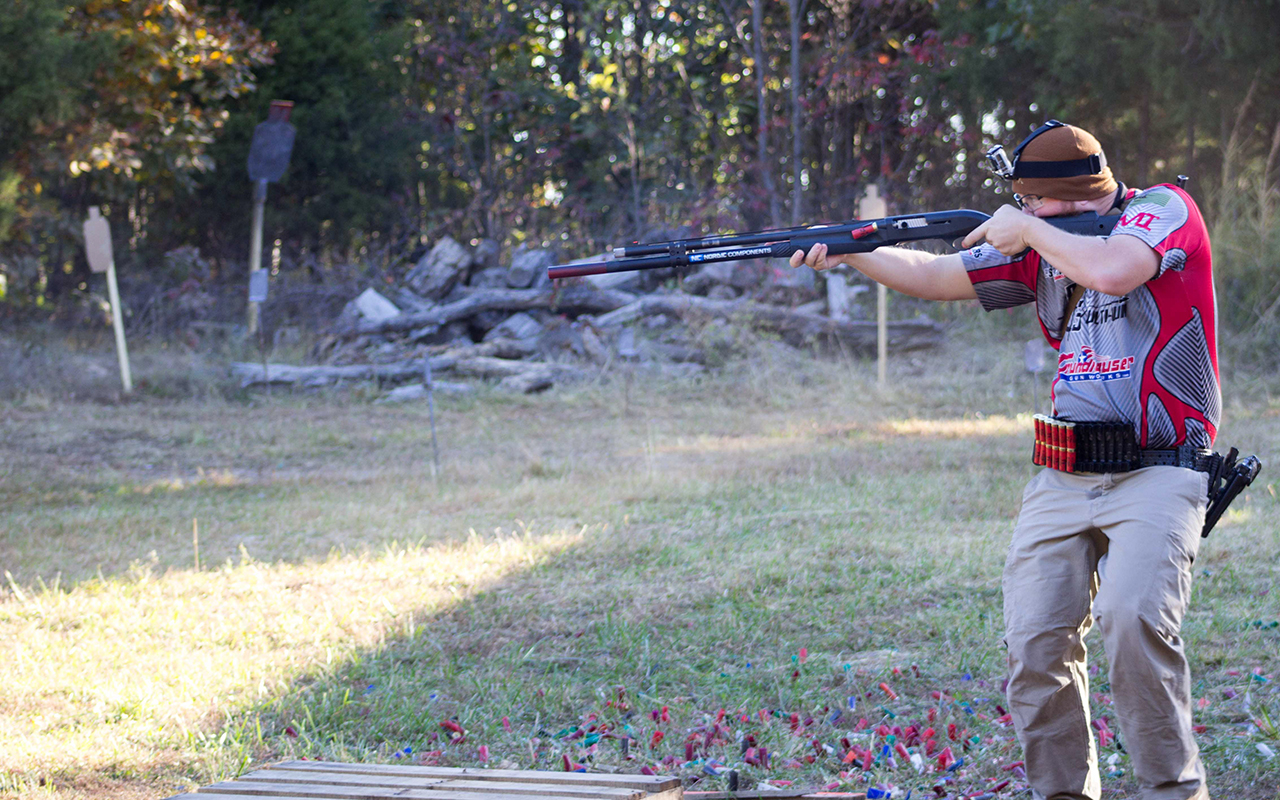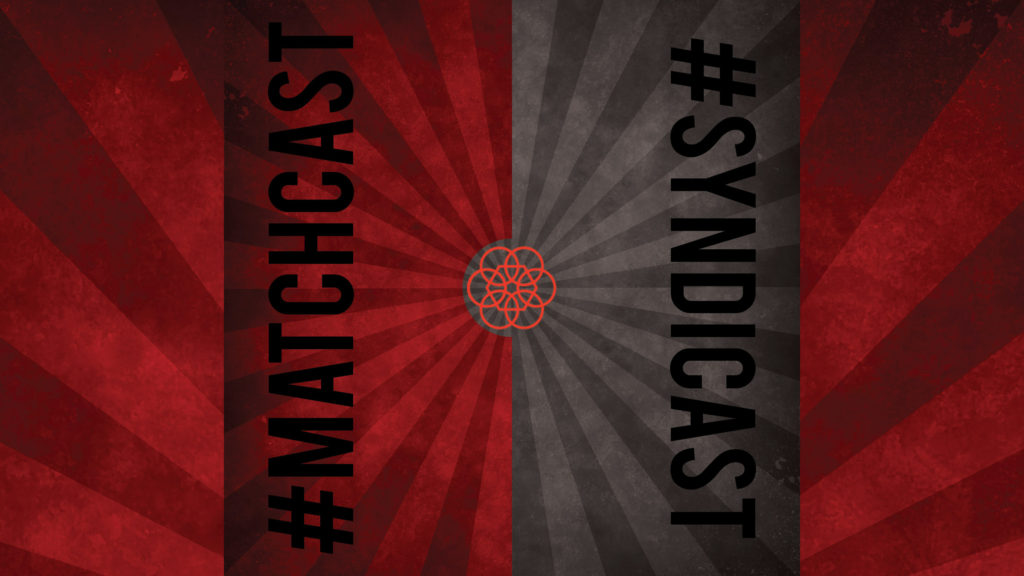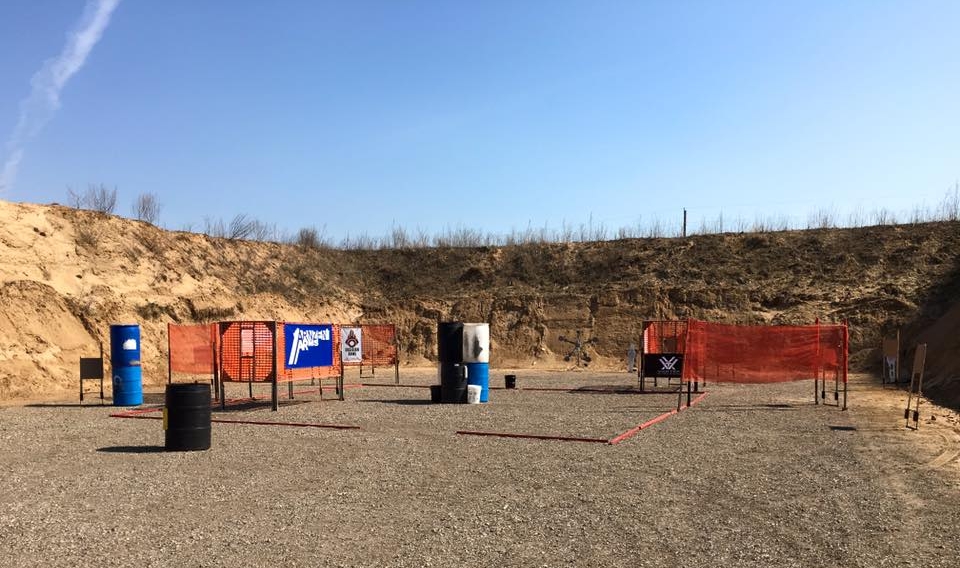While the primary draw to 3-gun for most enthusiasts is the equipment and subsequent tinkering with gadgetry, it is not what wins matches. What wins matches is formulation, visualization, and execution of the perfect stage plan. Sometimes there are right and wrong answers to problem solving a stage, other times it is simply an exercise in exploiting one’s personal strengths. Generally speaking, the shots themselves aren’t that tough…but finding the most efficient means of getting all the work done and arriving into a position ready to break the shot is the name of the game.
If I reflect back on the hundreds of stages I’ve shot, success and failure always comes back to “the plan.” The stages I’ve crushed were always ones that fell together just perfectly in my mind’s eye. On the flip side, epic failures usually come back to poor execution or a planning oversight. The best plans usually have a couple back doors and/or plan B’s incorporated into them as well to head off catastrophe. In the most simple of terms, the following is my formula for developing a stage plan. Over the years, the ones that came together were essentially because I did some combination of all of these things and vice versa when I’ve gone down in flames.
The asterisk on all of this is the stage description. One doesn’t necessarily need the stage description to start the process of planning, but a firm understanding of the written stage procedure is a must before a plan can be finalized. Sometimes shooters have scouting access to a stage before the brief is available. Other times, not much can be inferred before the stage is briefed. A shooter needs to be intimately familiar with the written brief as soon as possible, but it is not necessary be initiate the planning process.
The first step is stage planning is counting the targets. It seems simple, but I will count the targets in three ways before it’s all said and done. The first count is to find all the targets. I will usually go down range to do this so as not to be bamboozled by visual trickery of stage design. Physically go and find each one; touch it if you have must (maybe even check the calibration while you are there). Count one- how many targets are there? The next step is to find where all of the targets present themselves from within the shooting area. Count two- where must I go within the shooting area to address all the targets? The third time I count the targets is in relation to ammunition. Count three- how much ammo is required to complete the stage and how many reloads does that round count require? As I start to consider reloads, I slide into the choreography phase.
Once you know where all the targets are and how much ammo you will need, it’s time to start choreographing the most efficient means of addressing them all. This basically is the decision making process of finding the most efficient way to get all the work done. It is a process of plotting index points, or land marks if you will, and associating tasks with those landmarks. The question is from where will I address which targets and when/where are reloads necessary/advantageous? This is the most stressful phase because it is where all of the if/than dilemmas come into play. If I do it this way can I trim out a reload? If I shoot all the targets from point X do I even need to go to point Y…but if I go to point Y can I shoot them faster? Sometimes stop watches even get involved to decide if one plan is faster than another.
The final step of the choreography phase is considering Plan B. I ask myself, if I shoot the stage in this way- what is the margin for error? Do I have extra rounds in the gun in case I need a make-up shot? Do targets present themselves from more than one position? Many folks get so focused on the way they ideally plan to shoot the stage, that if it goes less than perfect at all, then they are a complete train wreck. I never plan on going one-for-one unless there is a compelling reason to risk it, and try to have some idea of how many extra rounds I have to play with. I always try to have some sort of idea of what I will try to do if things get off track. Also decide what the triggers are for plan B. For example, if I shoot at the Texas star more than X amount of times-initiate extra reload. A good Plan B usually revolves around an honest and humble understanding of one’s limitations and taking them into account.
The final step is visualization. This is the part where I am trying to burn the plan into my head. Done properly, one should be able to visualize shooting the stage sight-picture for sight-picture, and I strive for it to be as real in my mind as actually seeing it through my eyes. Once I have arrived on a stage plan, I also try very hard to only visualize it from beginning to end-all the way through. This is because I find if I dwell on any one part of the plan- which is tempting to do for tricky targets or sequences- I tend to forget other pieces on the plan. A good plan is one fluid motion; don’t think of it in pieces after the choreography phase.
That is essentially the essence of formulating a stage plan. First, you count the targets. Then, choreograph an efficient solution for the stage. Finally, visualize the plan as much as possible until it is your turn to shoot. The order is not necessarily important. Sometime stages are pretty straight forward; sometimes you can start planning days before you actually have to go live. However, to arrive at a good plan, a shooter will have done all three things. The more a stage freaks me out or confuses me, the more I try to stop and take it from the top…by the numbers. “How many targets are there…where can I see them from…” The more comfortable one becomes with the sport, the more second nature planning will become and the more astute one will be in making decisions to arrive at a good plan based upon their individual strengths. Once you are comfortable with breaking down stages and making a plan, you will be poised to unleash your full potential at the sound of the BEEP.




